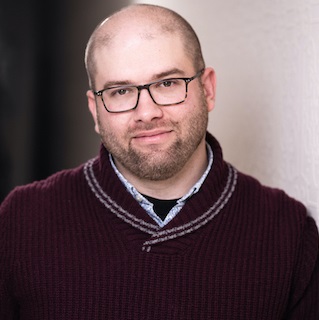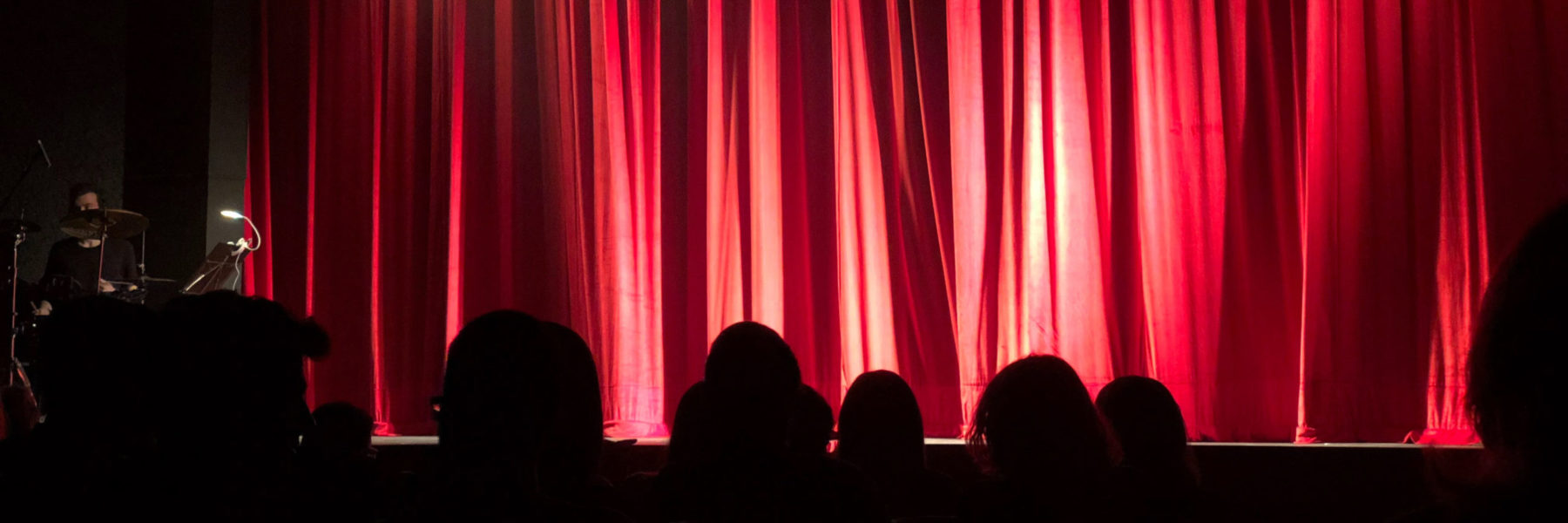Ian Garrett, a theatre professor in the School of the Arts, Media, Performance and Design (AMPD), considers the impact of technology and its role in driving positive change in post-secondary education.
By Elaine Smith
Ian Garrett finds teaching to be as inspiring to him as learning is to his students.
“I love being challenged and working through ideas with students,” said Garrett, an associate professor of ecological design for performance in the School of the Arts, Media, Performance and Design. “I have no interest in being an island. I get lots of viewpoints and perspectives.”

Throughout his tenure at York University, Garrett has seen teaching evolve. He remembers when he was the only faculty member in the Theatre School at California Institute of the Arts with a course website, since he knew how to design and build one. Today, it’s a given.
“Technology has exploded,” he said. “I built one of my large courses as an online class and it has informed a lot of my in-person teaching. I’ve had the opportunity to invest time in elearning and think about it. It has caused me to rethink my priorities and my methods of assessment, which is reflected back in my other courses.”
In considering assessment, Garrett has looked at his goals and at the purpose of grading.
“I think that earlier in my career in teaching I believed you had to earn your grade and it was a chance to see if students could rise to the occasion,” he said. “Now, a lot of my teaching is about driving student success. My goal is to get my students to do well. My assessment is guided toward their literacy and mastery of the topic. I do give quizzes, but my courses are project-oriented. I’ve discovered more engaging ways of seeing if the students can process the necessary information.”
An Academic Innovation Fund grant initially helped him move his course online and as he did so, plagiarism was a concern. He has learned to ensure that the outcomes from his design assignments are unique so he gets a better sense of what a student can actually do; the outcomes are more personal to each individual.
Garrett believes strongly that technology drives change. A lot of the work he does in design requires hands-on skills with technology and he was also an early adopter of putting course materials online. He wants students to be conversant with technology.
“The integration of technology creates a more holistic learning experience,” Garrett said. “For instance, I can direct them to other resources such as the library electronically. Before Zoom, I would have guest speakers regularly using video conferencing. It brings in other expertise and promotes the ability to look outside the classroom. It expands the classroom and helps the students feel like they are part of a larger experience.”
Garrett is an advocate for globally networked learning (GNL) and believes internationalization broadens the student’s experience. During the pandemic, he worked in collaboration with students enrolled in his Ecoscenography course and with students from two Australian universities to design sets for the Climate Change Theatre Action Festival, held in Calgary this past summer. Despite the 14-hour time difference, they found a way to create designs together online.
“We can have global classrooms and are able to interact with people across the globe in real time,” Garrett said.
He also supports experiential education and expects it to remain a valuable addition to the classroom experience.
“I’m always looking for ways to get students out of the space we’re in, whether that’s through a field trip or a placement,” Garrett said. “I want to get them into an environment where the work [of making theatre] is happening.
“For instance, in my Sustainable Staging Techniques course, I asked the students to create proposals for change on campus that required them to learn about how the campus works in ways they hadn’t though about. They were busy talking to people from Facilities & Services, for example, and they could see their work in action. Our theatre work isn’t separate from the rest of society, so it’s really valuable to connect with other systems.”
Garrett agrees that students want more agency and says AMPD’s theatre program is headed in that direction.
“There are so many options for what students can do, so we’re trying to break down the rigid structures of the past and make the program less prescriptive,” Garrett said. “Students want to make things to tell stories and to explore all the different ways they can express their ideas. There are so many different outlets and modalities for their creativity and technology is less expensive than ever. There are podcasts, short-form videos … the challenge is how do we support students so they have the common skills initially and allow them to specialize.
“They may not know what all the options are, but it’s part of our job as faculty members to help them find what their passions are. AMPD is so diverse; it can be overwhelming in terms of choices. I like the excitement of students making connections among the options.”
In preparing students for the future, Garrett believes that “the most important thing we can do is to help students learn how to learn. There will always be new technologies and new subject fields, but we can help students to learn how to solve problems, how to learn new tools and skills, how to decide which ones are important and how to apply them to their own work. We can teach them critical thinking and how to come into a new environment and cultivate the new skills they need.”
In looking toward the classes of the future, “I’m excited about exploring mixed reality technology and its ability to affect the way we deliver courses. Research into virtual reality and live performance may allow us to have the same in-person experience simultaneously. Being in a classroom will mean sharing either time or space together.”


